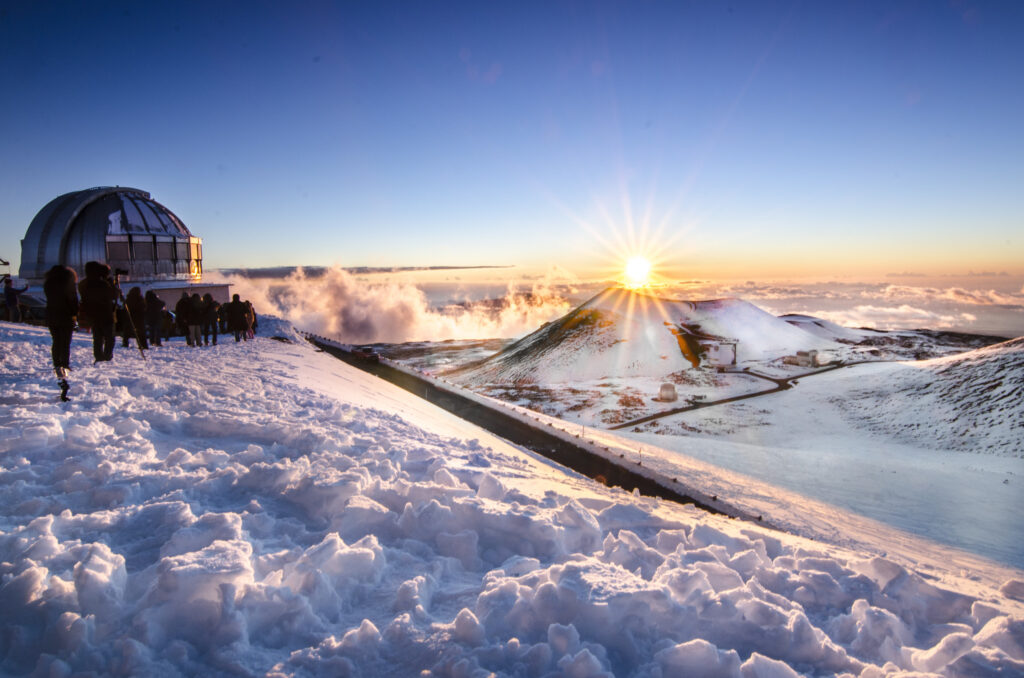National Weather Service (NWS) meteorologists in Honolulu, Hawaii, warned that snow could fall on top of the Big Island, making travel difficult Monday.
October marks the beginning of Hawaii’s rainy season, which lasts until April. On Monday morning, meteorologists issued a winter weather warning for the Big Island. “Deep moisture will continue to move through the region today, with a chance of rain and snow on the higher peaks,” the forecast said.
Given the altitude, it is not uncommon for snow to fall on the tops of Hawaii’s volcanoes, and blizzard warnings are sometimes issued in Hawaii during the winter. Although there are no ski resorts in the state, advanced skiers sometimes travel to Hawaii to ski the slopes of the volcano.
Stock image of snow on Mauna Kea, Hawaii. A storm brought snow to high-elevation areas of Hawaii on Monday. Stock image of snow on Mauna Kea, Hawaii. On Monday, a storm brought snow to Hawaii’s higher elevations. Suckawockie/Getty
On Monday, the storm was expected to bring a mix of precipitation with patches of rain and snow.
“Additional snow accumulation of up to 3 inches will occur, mainly in the morning. Travel can be very difficult. Visibility may be significantly reduced due to the snowstorm and visibility may be reduced to zero.” the recommendation states. “A winter weather warning means travel will be difficult during periods of snow, sleet or freezing rain. Be prepared for slippery roads and limited visibility and use caution while driving.”
NWS meteorologist Liam Tsamas told Barron’s that it’s unclear how much snow has already fallen because there are no observatories in the higher mountains. He said up to 4 inches of rain fell in lower elevations.
At approximately 14,000 feet above sea level, Mauna Kea is Hawaii’s highest peak. It is the tallest mountain in the world, measured from base to summit, and its base extends approximately 20,000 feet below sea level.
Because the volcano is so high, it sometimes experiences snowfall during the summer. Tsamus said it is not unusual for snow to fall on the mountain tops in October.
The storm also brought heavy rain to other parts of Hawaii, with most low-lying areas under flood watches.
“An upper-level low pressure system near the Hawaiian Islands is creating unstable conditions in a very moist atmosphere,” the Flood Watch said. “As a result, we will experience periods of locally moderate to heavy rainfall. Rainfall on already saturated ground could quickly lead to runoff and flash flooding problems.”
A flood watch will continue for all major Hawaii islands until Monday afternoon, according to the advisory.
“Flood-prone roads and other low-lying areas may be closed due to increased runoff and river flooding,” the Flood Watch said. “Urban areas may experience more significant flooding and property damage due to rapid runoff.”

